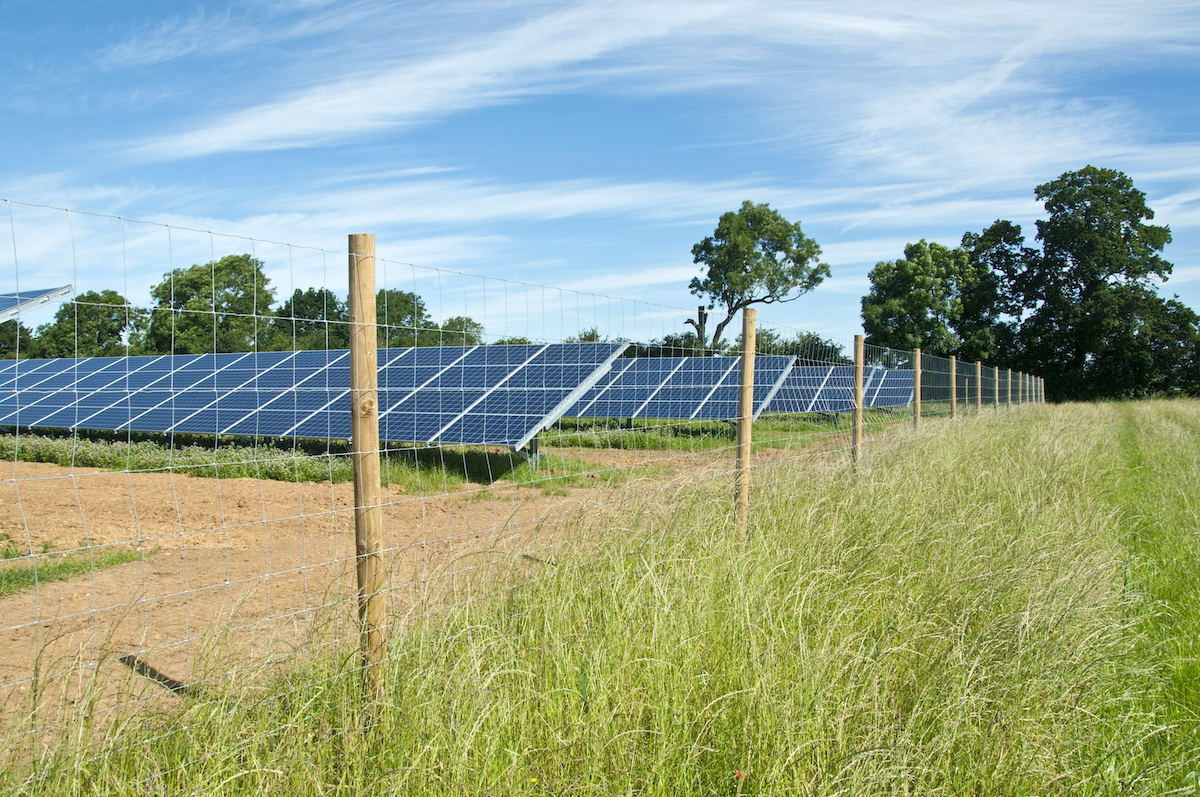This article first appeared in Energy World magazine, March 2021.
It can also be read here
Community renewable projects have a unique role to play in decarbonising the UK’s energy mix – delivering additional benefits to local people. Here, Ben Rick of Social and Sustainable Capital lays out a roadmap for the sector’s success.
Bristol Energy Cooperative has now installed over 9 MW of solar and battery assets with the help of Social and Sustainable Capital. Photo: BEC
Government data shows that by the end of the second quarter of 2020, the UK renewables market had capacity of 48.5 GW. This figure continues to grow each year. Recent expansion has primarily taken place in the offshore wind sector. However, tucked away in the total number is a subsection of the market that has growing relevance: community led renewable energy. Community renewables projects are those that are owned by a community organisation that typically retains some or all of the surpluses to support local social purpose.
Community Energy England’s annual survey shows that the UK community renewables market had a capacity of 264 MW at the end of 2019. This includes 300 projects spread across the UK and involving almost a quarter of a million people. These figures are likely an underestimate – since Community Energy England is a membership organisation, its data may not capture the whole sector. Community renewables can be easy to miss, as they admittedly account for a small fraction of the sector’s overall capacity. But at Social and Sustainable Capital (SASC), we would argue that community schemes are a vital part of the modern energy mix. Most obviously, they contribute to the overall decarbonisation of the UK’s energy market.
Under the UK’s Nationally Determined Contribution (NDC), the government has committed to reducing economy-wide greenhouse gas emissions by at least 68% by 2030, compared to 1990 levels. Targets like that mean we should encourage all providers of renewable energy to play a part – not just major commercial players.
But at a time when ‘levelling up’ is such a high priority, community renewables projects also deliver a whole raft of positive social outcomes: community cohesion, local economic resilience and jobs, low-cost energy generation and cost savings on energy when installed. Many community projects put some of their profits into a community benefit fund that can support local initiatives.
According to Community Energy England’s report, existing projects have delivered £4.6mn of community benefit funding. Importantly, many choose to target fuel poverty in their local area.
Tackling fuel poverty
Fuel poverty is a complex problem, closely linked to broader issues of social inequality. The charity Age UK estimates that 25,000 older people die each year because of the cold weather and 4.5mn older people live in fuel poverty. It reflects three key factors: low income, high fuel prices and the energy requirements of a household. The government calculates an annual fuel poverty gap – the reduction in fuel bill that the average fuel poor household needs in order to avoid being classed as fuel poor.
In our current system, global markets drive energy prices and there is little that consumers can do to address this. Community renewables projects can help alleviate fuel poverty’s impact on the local community by addressing the three key factors that cause it.
Projects can generate low-cost energy for the local community or use their income to mitigate high energy costs. Local projects can use their knowledge of the community to ensure that they use profits in a way that delivers maximum social benefit. A community benefit fund can be used to address poor insulation or to help low-income families with heating bills.
Making a difference in this way (sometimes called ‘additionality’) is what really matters for SASC in community renewables. It explains why renewables are one of our main focus areas for funding. Since launch in 2014, we have invested almost £70mn in community energy projects.
Our mandate is to fund community groups and local enterprises that can’t access mainstream investors. Our borrowers are socially minded organisations, working within marginalised communities. We describe our work as having a double bottom line – we screen for financial security and return, but also for positive social impact and building resilience in communities. Renewables allow us to add a third, environmental, bottom line.
Addressing obstacles
So, what gets in the way of community groups contributing to the UK renewables market? The main barriers are a lack of skills within the community; the absence of a coherent government strategy; difficulty in obtaining development funding; the demise of the Feed-in Tariff (FiT); and a scarcity of the right kind of funding.
A lack of relevant skills within the community group is perhaps not a surprise. Community groups rely on local motivation. Building and managing an energy asset is not a simple thing to do. Luckily, there are specialist intermediaries and support organisations who share the same motivation as local groups. They can support or run projects for the community. We work with several of these organisations and they are critical to the sector.
It is also easy to see why government policy might overlook such a small subsector, but this has real consequences. Barriers that government has removed for the mainstream renewables market still get in the way. Local groups have reported difficulty in securing planning permission and the absence of government backing can make it hard to argue their cases with local authorities.
The last Community Energy Strategy update from government was in 2015. Since then, government has removed 60% of the support mechanisms that it used to grow the community renewables market. The most important of these was the FiT.
The Feed-in Tariff scheme closed to new applicants in March 2019. The FiT provided reliable payments structures to owners of renewable energy generators, enabling the cost of installation to be recouped. It led to development on a large scale, especially in solar power. Government figures show a 3% year-on-year increase in capacity installed between March 2018 and March 2019 – a 4% rise in total installation numbers. But more recent figures also show the impact of the FiT’s removal: 43% fewer small-scale PV installations were constructed across the UK in February 2020 than in February 2019.
Finding funding
The final barrier community groups face is access to funding. This is where SASC comes in. SASC’s mantra is ‘flexible finance’. Our mission is to create bespoke finance options for social sector organisations and to dismantle the funding barriers they face. What this means in practice is that, instead of imposing a cookie- cutter approach, we design funding that reflects what the borrower actually needs.
Two of our funds have broad mandates that allow us to support any project that has a clear community benefit. We also manage SASC Bridge Finance (SBF), which focuses on renewables. SBF addresses one of the main obstacles that community groups face: early-stage finance.
Mainstream lenders require community groups, just like any other sponsor, to put in equity ahead of senior debt. This is problematic for communities who don’t have millions of pounds ready to invest. SBF offers a financing bridge of up to 100% of the construction or acquisition costs to help community groups overcome this funding gap.
In a post FiT world, what role can social investment play in re- energising community energy in 2021? First of all, we need to make the financial case for community renewables. Early community renewables programmes have shown that they are not just viable but successful: they create a financial return based on an easy-to-understand asset delivering an essential service. Second, we need to innovate to help the sector grow in the new funding environment. Investors like SASC need to understand and find a way to work with variable energy prices.
We are currently exploring a number of subsidy-free projects. This requires more dexterity and an even greater understanding of what the community is trying to achieve. Our loan has to reflect both the community’s needs and the reality of variable energy prices. In the next year we expect to launch a follow- on fund to our current provision. The principles will remain the same. We aim to provide flexible finance to organisations that deliver positive social impact and make their local communities more resilient.
Two investment strategy examples
An early example of our investment strategy was our support of the Bristol Energy Cooperative (BEC), which wanted to generate local, clean energy, help boost the local economy and regenerate the community by investing its profits locally. It started with strong local support and got off the ground with some impressive early community share raises. But when it came to expansion, they needed supportive finance.
SASC stepped in, alongside Triodos Bank and Bristol City Council, to fund the build of a major new solar park. BEC has now installed over 9 MW of solar and battery assets. It works with local businesses to get them to house solar panels, but also to buy the energy and has created many local jobs. In addition, BEC’s community benefit fund has made over £250,000 of community benefit payments.
In BEC’s case, the financing was relatively simple. As the project qualified for the FiT in 2016, BEC could forecast a steady, solid financial return. The strong community benefit in Bristol made this a straightforward deal for SASC Indeed, the majority of our projects funded to date have been very similar, whether wind turbines or solar farms.
A slightly different project that ultimately benefitted a local community was a deal done in 2019 by Leapfrog Bridge Finance, a specialist renewables fund that SASC acquired in 2020. Leapfrog financed the construction
of two solar farms in York and Hull. The end customer was Warrington Borough Council, which has set itself ambitious targets on clean energy through its Green Energy Strategy.
While this is not a traditional community energy project, the council recognised that the reduced energy bills they would enjoy would impact positively on their finances, leaving them in a stronger economic position. Some of the revenues generated have been, and will continue to be, placed into a community benefit fund that will help to address fuel poverty, as well as funding community projects across the borough.


